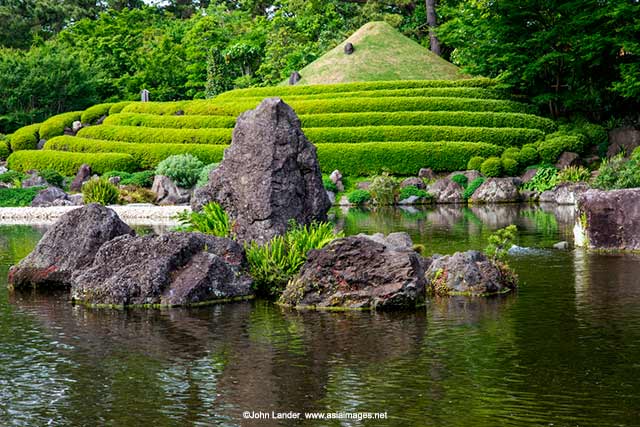
Momijiyama Garden, Sunpu Castle Ruins, Shizuoka
With his heart and lens focused on all things oriental, freelance photographer John Lander makes Kanagawa, Japan his home. His travels with the camera have taken him all over Asia. Beyond the landscapes, architecture, hot springs, Japanese cuisine,and festivals, he is particularly fond of nature and the Zen of Japanese gardens. It has become his specialty and passion.
To name just a few of the many credits, his images have appeared in the National Geographic, Time Magazine, Oxford University Press, Conde Nast Traveler, Lonely Planet, and the Wall Street Journal.
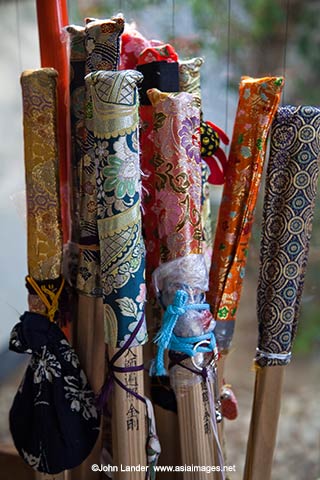
Henro Pilgrim Walking Staffs
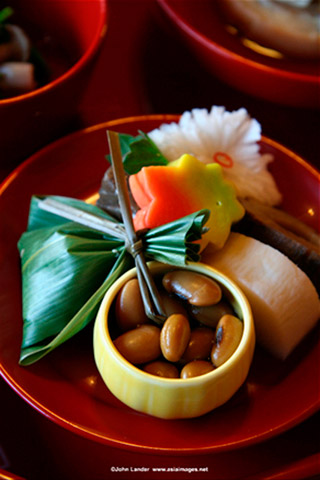
Temple Cuisine – Shojin Ryori
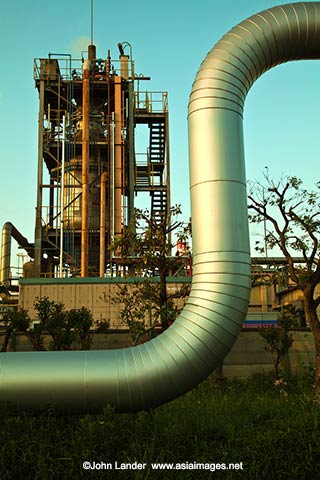
Keihin Industrial Area, Kawasak
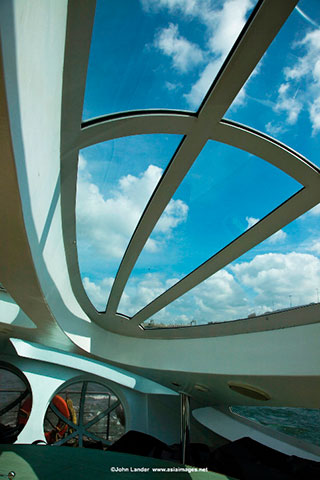
Himiko Water Bus Windows
Q: What inspired you, to get into the business of photography?
In 1998 I was employed as a text writer for a Japanese educational publisher. To me, the photos and graphics being used were less than interesting. I asked the editor if I could submit photos which might be more appealing to readers, making the texts more interesting.
During the year 2000, I attended the Book Passages Travel Writer’s Conference in San Francisco, California. The event is hosted by professional travel editors. Here I learned that travel writers who submit photography to accompany their text are in demand because it saves publishers plenty of time and effort.
The following year, while attending the Photography Group at the conference, I discovered that I had much more in common with those folks. During the writing critique, a few editors mentioned to me, “It would be best if you stick with photography.” That’s how I got to where I am today!
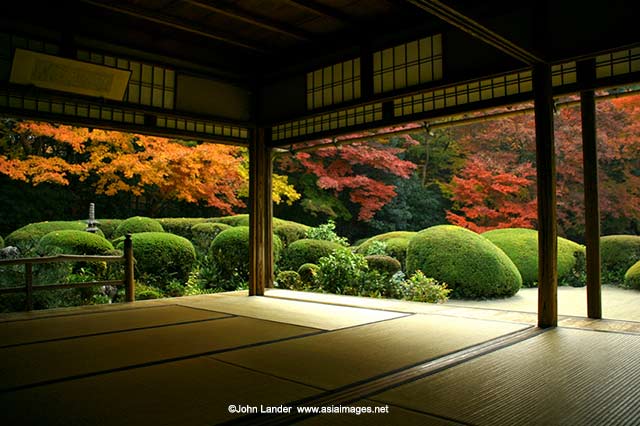
Shisendo Hermitage Garden, Kyoto
Q: Where exactly have your travels with the cameras taken you?
All over Japan, including many far flung prefectures, and nearly every country in Asia, excluding Bhutan. It is definitely on the bucket list! My favorite destination other than Japan is the Philippines. People there love to be photographed and really get into the spirit of things.
As an outdoor photographer on a small island, there are many things I must be aware of before I go out for the day’s shoot. Weather predictions, cloud conditions, tides, and time of day for sunrise and sunsets, as well as, moon rise and moon set, dictate my plans for the day and, what gear I will be carrying.
Q: Could you give our readers some clues as to how you would prepare for photographing in a Japanese Garden?
Location, season of the year, lighting conditions, early morning, late afternoon, natural light, and avoiding crowd scenes are all important considerations. I try to get at a venue just before opening hours so I’m first in the door. If the place needs afternoon light, I will linger until they start kicking people out.
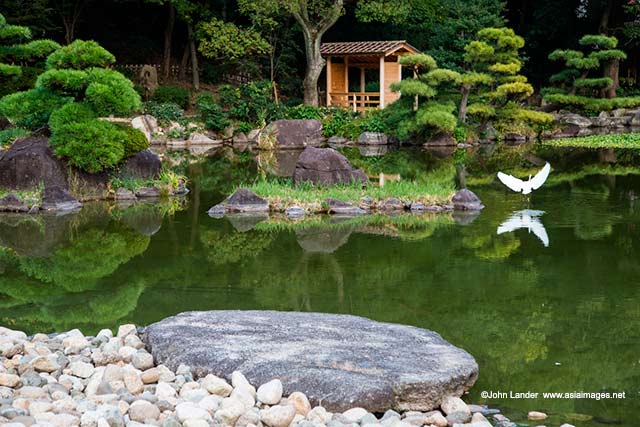
Keitaku Garden, Tennoji Park, Osaka
Q: Specializing in Japanese Garden Photography as a freelancer must be drastically different than making photos for a client. Could you share some of the variations between those types of photo sessions?
I find that I do much, much better when I photograph things that I am interested in. It really does show up in the photo end results. Truly! If I am asked to do assignments, like a corporate head shots, images come across as merely adequate or professional-looking, but just about zero for the wow factor. However, I find commissioned photo shoots, especially commercial, pay a lot better and more promptly than editorial. They also tend to be easier to work with. But, it is rarely anything I can “sink my teeth in”. Editorial art directors and photo editors for books and magazines tend to be much fussier, but the commissions can be a lot more interesting. Still, I find that it is best, for me anyway, to pursue projects that interest me then try to turn them into publishing projects either for books, calendars or magazine features.
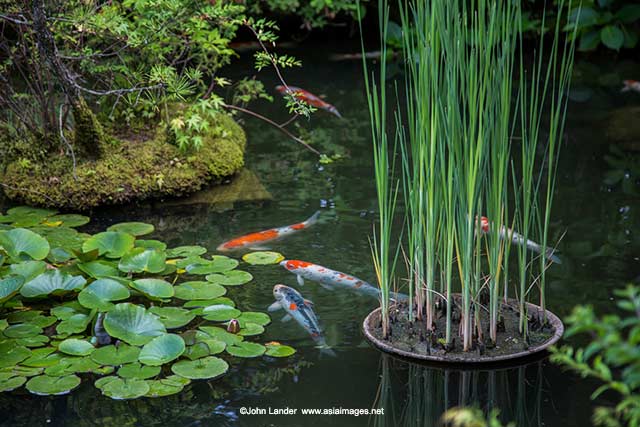
Koi Pond, Taizoin, Kyoto
Q: Could you elaborate on some of the photographic equipment used?
I use only Canon digital full frame cameras, 5D, 5D Mark II, and 6D. Though I have experimented with third party lenses, I have not had good experience with them. I use only Canon “L” quality lenses. They stand up to more wear and tear, and the image quality is far superior to an ordinary, consumer grade lens. My first “L” lens was a Canon 16-35mm wide angle that I got second hand. The quality of the images I produced in the first few weeks were better than anything I had ever done before. Over time I traded in the rest of my arsenal of lenses for all “L” lenses. I mostly use the newest incarnation of the 16-35mm Canon “L” wide with image stabilizer, as well as the 24-105mm “L” walkabout lens. For macro stuff, flowers and food, I use the newest Canon “L” 100 mm lens. I rarely use zooms. As for memory cards, I always use high-speed pro quality Sandisk cards. I dislike dragging tripods around, but when I must, I have a lightweight titanium tripod. If I can get by with it, I find other creative ways of stabilizing the camera.
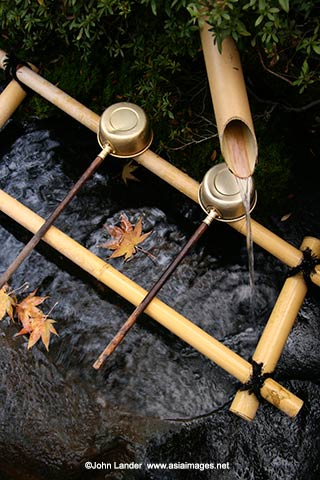
Tsukubai Water Basin in Autumn, Nikko
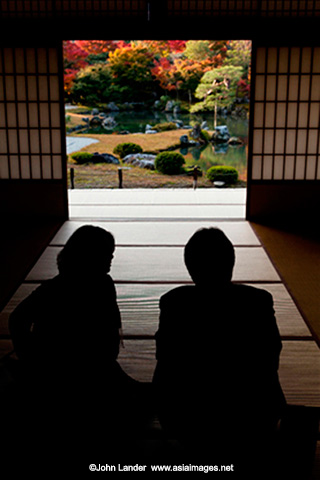
Admiring Sogenchi Pond Garden, Tenryuj
Q: For someone starting out in the field of photography are there some tips and advise you can share with the readers?
Practice, practice and more practice. Don’t be afraid to experiment. Learn from your mistakes. We all make them. Data on a digital camera is recorded for every shot you take. Read it and ask yourself, “How could I have made that photo come out better?” I am a big fan of Art Wolfe, even though I am not a nature photographer. His sense of composition is extraordinary. I believe, starting out as an artist, he always looks at an image’s composition first and foremost. A book I highly recommend is, “The Art of the Photograph” by Art Wolfe and Rob Sheppard. Besides all the various compositions and types of photography, they show duds, compared with great compositions, instructing the reader on how to make better images. Great stuff!
I also enjoy hanging out with other photographers on occasion; it gives me inspiration. At the best of times, my photographer buddies photograph very different things or events, so we are not in competition with each other (which can be fierce!).
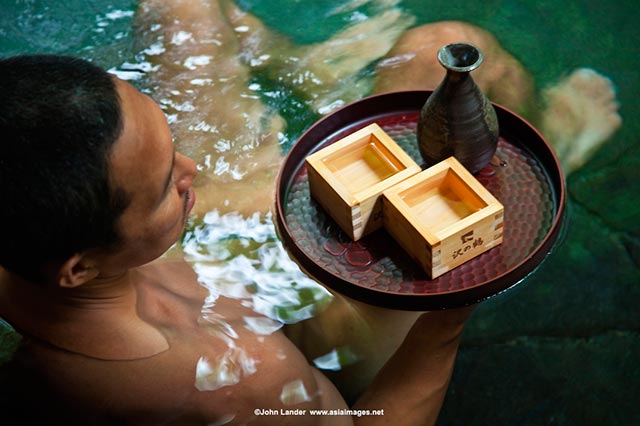
Floating Sake at Onsen Hot Springs
Q: Do you have a photo with an unforgettable story behind making the image?
In general, the most successful photo sessions occur when there is some kind of human interaction, drama or story going on. I am not especially good at photographing people and have to challenge myself with this. However, I have learned that cultivating the subject, showing an interest in them and their lives makes all the difference!
Nowadays, Japanese gardening is done by professional landscape companies that come and weed, tidy, water, rake, etc. In the past, especially in a Zen garden, this was done by the resident monks. It was believed to be a form of meditation. It is now rare to find monks who will actually dirty their hands with the task. One exception I found was a monk friend of mine in Kyoto – at the temple where I stay during extended visits. Every other morning he gets up and rakes the garden, forming tidy lines and removing debris from the garden, just as Zen Buddhist monks have done for centuries. Although Rev. Taka is a modern kind of guy and US educated, he likes to stick to traditional values when he can. Naturally, I seized the opportunity to photograph him in the temple garden. Without a personal connection, it can prove to be quite difficult create such images.
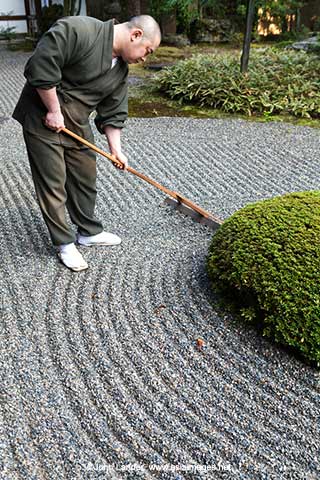
Zen Buddhist Monk, Rev Takafumi Kawakami at Shunkoin Temple, Kyoto

Shinnyo Do Modern Zen Garden, Kyoto
Q: What are your thoughts on film vs. digital?
In early days, digital had trouble capturing true colors and saturation, especially reds. Now, I feel that, at least with full frame camera sensors, it is even better than film. I would, not say the same is true for non-full frame sensors; they have a long way to go, in matching the quality of a film photo.
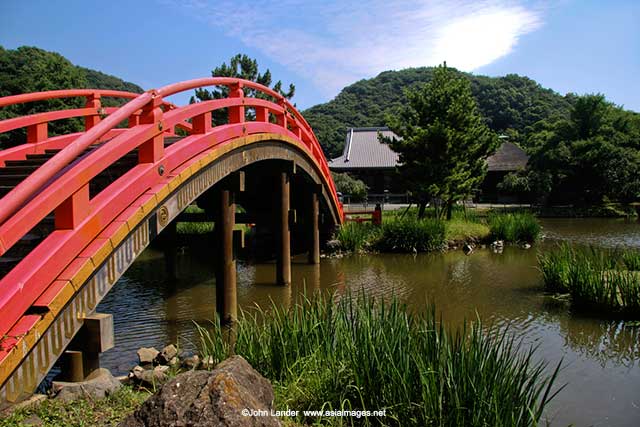
Shomyoji Temple Bridge, Yokohama
Q: What equipment do you pack for a one or two week expedition?
Beyond the cameras and lenses, I would definitely bring: notebook computer with Adobe Lightroom, extra batteries, memory cards, battery charger, external flash, AC converters for countries that use odd electrical outlets, a waterproof/dustproof bag in case of rain, severe weather, wind or dust, lightweight tripod, lens tissues, cleaning liquid, wet wipes, small towel, sunscreen, a hat, thermal lightweight undershirts, snacks such as health food bars, thermos, and last but not least my iPhone. I rely on the iPhone more and more, especially for Google Maps. Another handy thing that I love is Canon’s EOS Remote app. Not only can it serve as a wireless control for the camera, but I find it most useful for reviewing photos on the camera’s memory card to select images, delete, blow them up to make sure they are sharp and clear, etc. It’s a great way to clear up a memory card if I am running low on space. It also gives me a head start on editing. If it is a rush job, I will edit on the fly using Lightroom on the notebook, but I hugely prefer a large screen Mac at home – it is a lot easier to detect problems with a photo and/or select the better image if I have multiple choices for one particular subject.
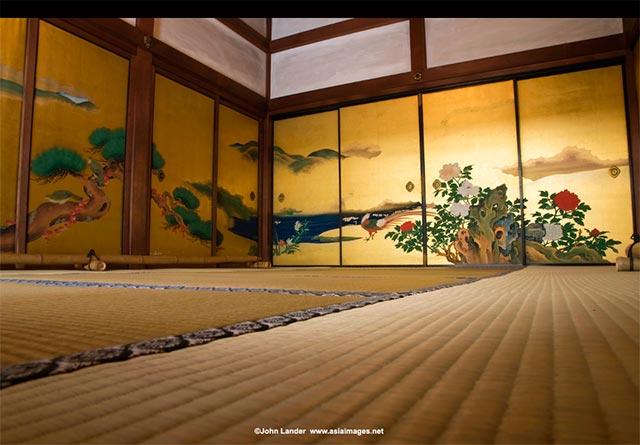
Tatami Mat with Golden-Fusuma (sliding doors)
Q: What might you try to achieve with your photography in the future?
I have been doing photography for a calendar publisher “Gardens of the Spirit” on Japanese gardens for the past few years. Each year the editor wants new, fresh, seldom visited places. Consequently, I have amassed a huge archive of Japanese gardens throughout Japan and elsewhere. Because of this, I am trying to get them published in book form, my ultimate goal.
Interview by Michael Lynch
Photos: © 2016 John Lander. All right reserved.

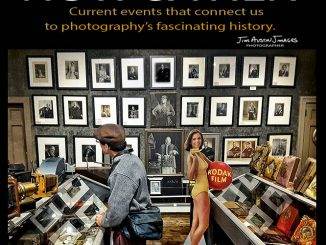
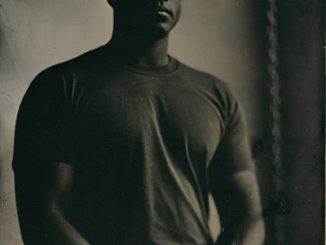
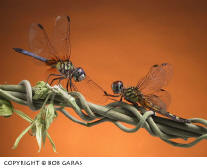
Leave a Reply